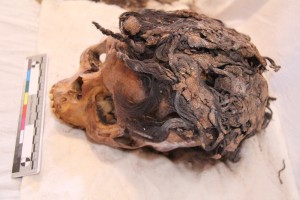Recently, a team of archaeologists in Armana, Egypt have been working full force on an excavation labeled the “Armana Project.” At this site, archaeologists have been working in cooperation with the Egyptian government to explore this ancient city in order to study, record and analyze the history of the traditional life here. Through this work, they are hoping to promote greater knowledge about the region and traditional life here, as well as to preserve the remains of this ancient city.
Archaeologist Joanda Bos, a leading figure in this excavation, has played a large role in the analysis of an Armana cemetery, a work in progress since 2006. She found some interested results. They are investigating all aspects of the city through the remains, including the popularity of different hairstyles. Out of the one-hundred skulls excavated, twenty-eight had traces of hair. This find is an unusual one for skulls that have been traced back over three-thousand years. One woman in particular struck Bos. A not mummified female, wrote Bos, had a “very complex coiffure with approximately seventy extensions fastened in different layers and heights on the head.”
Although this particular complex hairstyle was most likely styled after the female’s death, Bos believes that similar styling, including the use of hair extensions, was a common part of Armanian life.
There were various different hairstyles found on the skulls. There were remains found with hair intact that ranged “from very curly black to middle brown straight; which was often styled in rings or coils around the ears.” This range indicates the large spectrum of popular hairstyles in Armana during this time, as well as might hint to a certain degree of ethnic variation. It was also found that some extensions were made up of more than one color, showing that multiple people may have donated hair in order to make up one extension.
It was also analyzed that these ancient Armana citizens were found of braids as many of the skulls had hairstyles with intricate braiding styles. These braids were found to be small in size, made up of three separate strands that were approximately .5 cm wide.
Another interesting find was that Armana people preferred shorter hair, averaging 7 inches (a length just ending before the shoulders). This could have suggested something about their work or styles at the time. Important to note, also, is the way this hair was preserved. It was found that fat was used to keep the hair in place after death, comparable to modern hair spray. Whether or not the fat is from animals is uncertain, however.
As archaeologists in this project analyze their results from this site, they are able to look more closely into the daily lives of these ancient people in order to better their knowledge about the way that these Armana citizens lived their lives.
More reading:
http://www.archaeology.org/news/2523-140917-egypt-armana-hair
http://www.armanaproject.com
Sources:
Jarus, Owens. Ancient Egyptian Woman with 70 Hair Extensions Discovered. N.p., n.d. Web. <http://www.livescience.com/47875-ancient-egyptian-woman-with-hair-extensions.htmlr>
2. Renfrew, Colin, and Paul G. Bahn. Archaeology essentials: theories, methods, and practice. 2nd ed. New York, NY: Thames & Hudson, 20102010.
Picture links:
1: http://www.livescience.com/47875-ancient-egyptian-woman-with-hair-extensions.html
2: www.ancient-origins.net
3: www. archaeologynewsnetwork.blogspot.com



It is very compelling when something excavated from the ancient past resonates so strongly with your own society today. I personally find that these similarities enable me to relate to or understand the people(s) being studied in a slightly different manner. Hair extensions are extremely popular in the United States today and many people think of them as a relatively new style trend. However, as you note in your blog post, this is not necessarily the case. I am curious about how exactly the hair extensions functioned in Amarna. In the United States today, people often use them to enhance their beauty or to achieve a certain “look.” Were hair extensions similarly used as a means to enhance one’s beauty over 3,000 years ago? You also note that hair extensions were used in both ceremonial burial situations and in every day life. Did these extensions carry any symbolic meaning that determined by whom and when they were worn? How can archaeologists go about discerning this cultural meaning?